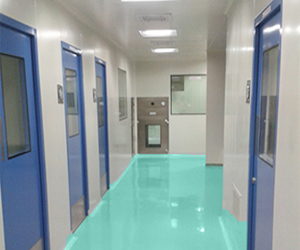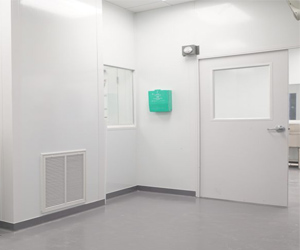- +91-9884528211
HVAC Clean Room Manufacturers in Bangalore
HVAC CLEANROOM MANUFACTURERS IN BANGALORE
HVAC CLEAN ROOM
Essential HVAC system Principles
Heating, Ventilation, and Air Conditioning (HVAC) systems are the heart of any building, endeavoring to manage temperatures, humidity levels, and air quality in homes, commercial buildings, and industrial furnishings. A productive HVAC system is basic for continue cleanroom conditions, where defend clean air is vital for the success of the tasks. Designing the air constrain system is firmly subject to the implementation of the system.

Significance Of Effective HVAC system In a Cleanroom
Cleanroom technology incorporate the utilization of specific HVAC (heating, ventilation, and cooling) systems to keep a disciplined environment with a low degree of airborne impurity, like residue, microorganisms, and spray particles. HVAC systems assume a basic part in operating the air quality of a cleanroom by giving a steady stock of distributed air and sustain the required temperature, humidity, and pressure levels.
The design and activity of HVAC systems for cleanrooms are uncommonly specific and require close regard to guarantee the highest levels of healthiness and safety. HVAC of a cleanroom controls the temperature and the humidity to numerous degrees of accuracy to inaugurate a contented environment.
key parts of HVAC systems utilized in cleanroom technology
Airflow and Pressure Control
Airflow and pressure controls are basic component in clean room design. The HVAC system should be intentional to keep a positive pressure inside the cleanroom, which keeps outside air from going into the room and debase the environment. The airflow inside the perfect room should additionally be carefully inhibited to prevent the accumulation of particles and contaminants. To achieve these objectives, the HVAC system should be designed to give a steady development of separated air into the cleanroom. The air supply should be dispersed identically all through the space to covenant that all regions get a decent inventory of clean air. The system should moreover be designed to effectually remove adulterate air from the room.
Filtration
Filtration is one more fundamental factor clean room HVAC system plan. The system should be deliberate to sift through particles and degradation from the air supply before it goes into the cleanroom. The kind of filter promote will rely upon the degree of neatness predicted for the particular application. HEPA (high-effectiveness particulate air) filters are generally promote in wipe rooms to sift through particles as little as 0.3 microns. ULPA (ultra low particulate air) filters can sift through particles as little as 0.12 microns and are employ in applications that require substantially more revealing levels of cleanliness.
Humidity and Temperature Control
Humidity and temperature control are moreover basic elements in cleanroom design. The HVAC system should be intentional to keep a predictable temperature and humidity level inside the cleanroom to forestall buildup and limit the growth of microorganisms. The temperature inside the cleanroom should be carefully restrained to avoid changes that could cause buildup or different issues. Humidity levels should likewise be conscientiously disciplined to provide moisture development, which can instantaneous the growth of form and dissimilar microorganisms.
Energy Proficiency
Energy proficiency is a meaningful thought in any HVAC system design, besides cleanrooms. The system should be designed to give the anticipate degree of air quality and neatness while tightening energy consumption. To accomplish this objective, the HVAC system ought to be designed with energy-proficient parts and controls. Variable speed drives can be promote to change the speed of fans and different parts in light of the reliable interest for cooling, which can help with restricting energy utilization.
Maintenance and Functionality
At last, maintenance and functionality are basic elements in cleanroom HVAC system design. The system should be designed to take into account simple admittance to parts for maintenance and repair without compromising the cleanliness of the environment. Parts ought to be chosen for their strength and simplicity of maintenance, and the system ought to be designed with overt repetitiveness to limit personal time in case of a part failure.
HVAC Cleanroom System Design
The design of HVAC systems in cleanrooms is different to those for commercial buildings.
What separates cleanroom HVAC to conventional systems?
• Increased air supply
• Airflow design
• High effectiveness filtration
• Cleanroom compression
Increased Air Supply Rate
Conventional air-conditioning systems expect around 4 to 8 air changes each hour, while a cleanroom could require anything between 20 - 90 air changes each hour. The air change rate method of calculation is normally utilized in cleanrooms with lower cleanliness requirements, with the air change rate to a great extent founded fair and square of particles created by people and processes. Thought ought to be made to cleanrooms with higher air change rate requirements, as the HVAC system will utilize more energy. The creator ought to give extra controls limit that will permit the system to reduce the airflow (utilizing a variable speed head) to reduce rates when the inhabitance rate is low or the room isn't being used.
Airflow Design
There are three different sorts of airflow designs accessible for cleanrooms designs:
Unidirectional (laminar): the wind current is basically where the wind streams downwards or sideways in an unhampered way.
Non-unidirectional stream (turbulent stream): where airstreams are other than lined up with each other.
Mixed flow: where airstreams might be lined up in one piece of the cleanroom and not in different parts.
Filtration
Cleanrooms use high efficiency absolute (HEPA) filters with 99.97% filtration effectiveness at 0.3 microns. HEPA represents High Proficiency Particulate Air. The HEPA filters work on dissemination standard to remove particulate matter. The filters are ideally suited inside the terminals of the ducted HVAC system, guaranteeing greatest neatness of air inside the room.
Cleanroom Compression
The cleanroom is decidedly compressed at a degree of between 10 to 25 Pa higher than neighboring regions. This is accomplished by providing more air to the room than is extricated from it. In clean spaces with a few rooms, the touchiest regions should be compressed marginally higher than the connecting rooms. Roughly 5 Pa distinctions should be accomplished from the most to least sure pressure regions. This is to guarantee that impurities are moved away from the most sensitive regions.
HVAC CLEANROOM DESIGN CALCULATION EXPLAINED
Cleanroom HVAC designing is definitely not something simple. It takes a mix of designing abilities, understanding the particle generating capability of the interaction, and experience. The amount of air is different in an ISO Class 6 and ISO Class 8 cleanroom. This means that the HVAC system should be equipped for molding over two double the air. However, grouping alone isn't adequate for ascertaining the airflow.
WHAT INFLUENCES CLEANROOM HVAC ENGINEERING?
It is not difficult to make a room clean assuming that nobody is inside, with no equipment, and no material development. But , activities happen in cleanrooms and should be represented in the HVAC calculation.
THE FOLLOWING ARE A FEW DIFFERENT ELEMENTS THAT IMPACT THE REQUIRED AIRFLOW:
• Cleanroom ISO order
• The layout of the cleanroom
• The number of people working in the room
• The equipment in the room (heat gain)
• The utilization of a smoke hood or biosafety cabinet (air extraction)
• The lighting system
THE LAYOUT OF THE CLEANROOM
The volume of air in the cleanroom will impact how much wind current required. The greater the room, the more air you want. The width, length, and level of the ordered rooms and their layout should be utilized for HVAC calculations.
People frequently fail to remember that the level of the room directly impacts the wind current. One method for saving money on costs is to bring down the roof. You can see the distinction by contrasting the airflow in the calculator utilizing similar information sources but changing the size of the room or the level of the roof.
THE NUMBER OF PEOPLE WORKING IN THE ROOM
The airborne defilement level of a cleanroom relies to a great extent on the exercises in the room and the work force. People are responsible for the majority of the particles created in a cleanroom. Airborne particles, for example, skin chips, cosmetics , perfume, drool, clothing garbage (build up, filaments) and hair, are the typical suspects .
When designing the HVAC system, the quantity of individuals working in the room simultaneously should be considered. The more individuals working in the cleanroom, the more airflow is expected to dispose of the contaminants.
THE EQUIPMENT IN THE ROOM
Like people, equipment creates heat and residue. The hotness gain created by the equipment inside the cleanroom is utilized to decide the cooling required. The equipment in the room, alongside the product manufacturing, create dust that should be eliminated with the right measure of air.
THE SMOKE HOOD OR BIOSAFETY CABINET
Rage hoods and laminar flow cabinet need consistent air supply — very much like the cleanroom. This air supply should be represented in the cleanroom HVAC calculations. Moreover, assuming the smoke hood depletes air outside the building, as with a biosafety cabinet, the depleted air should be supplanted with natural air.
THE LIGHTING SYSTEM
The necessary degree of lighting will likewise influence the heat created inside the cleanroom and thusly the cooling required. Customary office lighting of 300 lux versus high-accuracy lighting of 1200 lux won't create a similar amount of heat.















